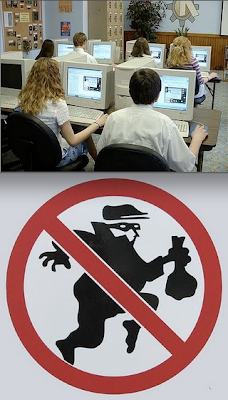LSAC has thought about computerizing the LSAT for several years. In May 1999, LSAC published a
titled, "Item Theft in a Continuous Testing Environment: What is the Extent of the Danger?"
In this study, LSAC and ETS consider "the possibility of organized, large-scale item theft" by "professional thieves" as a result of turning the LSAT into a computerized exam.
(Sadly, they weren't talking about an Ocean's Eleven-style heist or even about hacking.)
If the LSAT were computerized, it'd probably be offered on most weekdays, like the GMAT and GRE.
Since it wouldn't be practical to write hundreds of unique exams each year, questions would be recycled. This group of questions is called an "item pool" by standardized test nerds (
psychometricians). "Items" are test questions. (See my series on
how the LSAT is constructed for more details.)
Your average "thief" is someone of average ability who remembers a few test questions and passes them along to friends. This has some impact on future test-takers' performance.
However, if "professional thieves" took the exam for the purpose of memorizing test questions and passing them on to future test-takers, this would have a more significant impact. (In the early 1990s,
Kaplan employees took the GRE for the sole purpose of memorizing test questions - also see
LA Times. It seems they were doing it to embarrass ETS rather than to give their own students an edge.)
In order to counteract these kinds of shenanigans, it's likely that if the LSAT were ever computerized, there would be several different pools of questions. Each one would be large enough so any benefit gained from memorizing previously-administered questions would be minimal-to-none. Besides, the
topics of Logical Reasoning questions repeat so often that they tend to blur together in your mind unless you've done the question a few times.
For more details on what LSAC scientists do in their spare time when it comes to simulations about question-stealing, read the
LSAC study. If you skip the mathematical parts, it's actually kind of entertaining.
Photo by extraketchup / CC BY-SA 2.0
Photo by grimages / CC BY-NC-ND 2.0

























